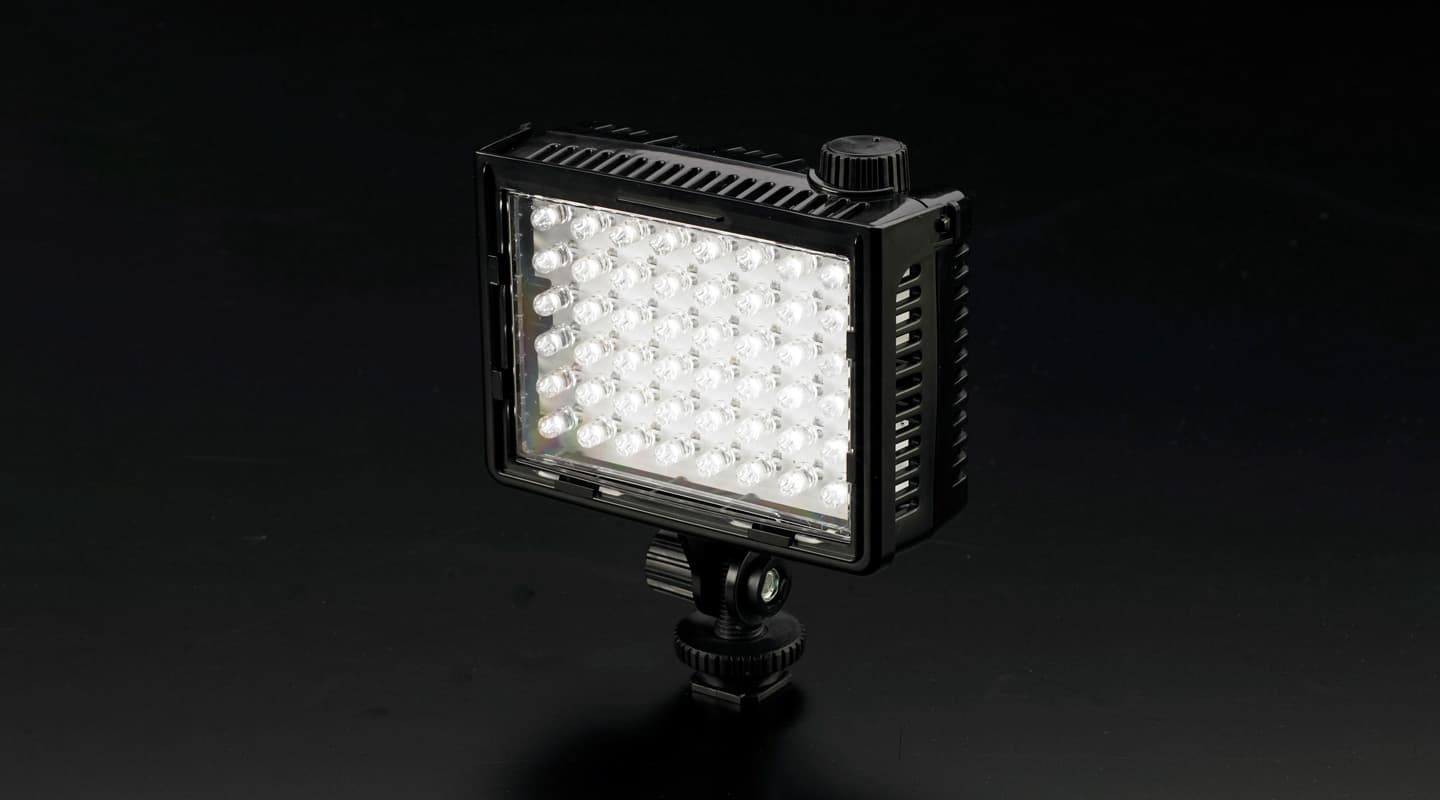
Review: Litepanels
LED now has a AA rating.
Text:/ Andy Ciddor
Despite my (well-deserved) reputation for being a tech-head who always wants to try out the latest technologies and ideas, I remain very conservative with the light sources I chose for creating pictures. When it comes to making images of familiar things like people’s faces and clients’ products, I am ever-so-slightly obsessive about colour accuracy. While I’m well aware that that our beloved viewers have the power to completely nullify our efforts at colour accuracy with the press of a key on their remote control, I nevertheless hold firmly to the ideal of supplying them with better quality images than they rightfully deserve. One consequence of this conservatism is that I have regularly been among the last to move to new generations of light sources for portraiture and product lighting.
(DI)ODE TO A LIGHT
As an enthusiast who has been playing with electronics since the age of eight, I was fascinated by the idea of LEDs, and used them as indicators on my projects as soon as I could afford to buy a few from Radio Parts. It was impossible to imagine that these dim, monochromatic, red indicators, that were so easy to blow up when prototyping, could ever become a useful source for illumination. And for a very long time they didn’t.
The LED’s main strength – its high efficiency at just one wavelength – is also its major downfall for general lighting applications. The familiar traditional light sources such as the sun, simple oil lanterns, fires, candles, and even filament electric lamps, all produce light by heating something up until it glows (incandescence). The heating process produces a very broad mix of light wavelengths that we identify as ‘white’ light. Unfortunately, almost all of the light produced in this way is in the invisible infra-red band, which doesn’t help our eyes to see or our cameras to shoot naturalistic pictures. Incandescent sources have a deservedly bad reputation for energy efficiency.
The light emitting diode chip, on the other hand, uses a much more refined physical process to produce just one wavelength of light, much more efficiently than simple heating. The output wavelength depends on the mix of semiconductor materials that the diode chip is built from. As longer wavelengths such as infra-red and red light are the easiest to cajole out of semiconductor chips, LEDs of these wavelengths were the first available. We continue to use high-efficiency infrared LEDs in the vast legions of remote control units that burrow into the crevices of our furniture.
Further developments in LED semiconductor materials eventually led to the production of shorter wavelengths and hence to yellow, green, cyan, blue, mauve and eventually even ultraviolet LED chips. It became possible to cluster a selection of LEDs to produce a mix of wavelengths that roughly approximate the white light from incandescent light sources. These clusters are what we see used in LED display screens and in the variable colour LED effects lighting that appears everywhere in contemporary television production, from Idol and Deal or No Deal to the 7pm News. While producing white light for general purpose illumination is clearly possible with clusters of LEDs, it is neither a particularly cheap nor particularly energy efficient approach.
The overwhelming majority of today’s white LED light sources are based around a single blue-emitting chip embedded in a fluorescent phosphor material that glows yellow when illuminated by blue light. The resulting (blue + yellow) light from the LED appears to be a cool white, and everybody applauds the application of this new technology to the current problem of energy efficiency. Today’s LEDs may be thousands of times brighter than their forbears, but they still need a protected and nurturing environment to thrive, and are usually being driven so hard that they require complex heat management strategies to avoid self immolation. The really big problem with the modern white LED however, is that the output spectrum often has a noticeable magenta cast and is more than a little lacking in the red area of the spectrum – the very area that is so important when lighting skintones.
PRODUCT DETAILS
Price:
Litepanel Micro $458.70 (in GST)
Litepanel MiniPlus two-head kit: $3278 (inc GST)
Lemac (02) 9436 0333 or www.lemac.com.au

SOUTHERN LIGHTS
Given my trepidation for using LEDs in production lighting, it was very interesting to receive a Litepanels Micro softlight to evaluate. Part of a well-designed system of light sources, mounting accessories, battery packs, power supplies and filter frames, the 3W Micro is very cute, but as I didn’t have a project to use it on at the time, I passed it on to Pete Curtis ACS, a news and current affairs cameraman at the ABC in Hobart, for a workout.
He put it in with his camera kit, pulling it out occasionally to use as a soft fill for close-ups when he was in a hurry and didn’t have time set up a mains-powered light source (the Micro runs for over an hour on just four standard alkaline AA cells). The Litepanel really came into its own when Pete was sent on assignment to cover the inaugural flight of the new air route from Hobart to the Antarctic, but given an absolutely miniscule weight allowance for his camera gear. The only lighting equipment he took with him was the little LED Litepanel and a box of AA ProCells. Judicious selection of camera positions and the battery-powered LED softlight to fill the holes enabled him to get the quality of results he had hoped for, despite the serious baggage restrictions. Pete went on to win a 2009 Silver ACS award for Current Affairs with the material he shot for this doco. After the Antarctic trip the Litepanel came out more often and was passed around between news crews who were shooting in unusual locations.
The news cameramen were impressed with the concept of the Litepanel softlight; even though the Micro was sometimes struggling to produce enough light to do the job (its built-in dimmer rarely ran at anything less than 100%). As a result, they encouraged the ABC to purchase the Micro’s larger (8.5W) sibling: the MiniPlus. The news crews now have a single head kit and a dual unit kit of MiniPlus units, complete with lithium ion battery packs, chargers, filter and diffuser kits, and a range of mounting brackets and other grip gear. The Litepanel Micro has since been passed on into the eager hands of the next generation film and video makers doing the VET media course at Rosny College.
I recently had an opportunity to use the ABC’s MiniPlus heads on a shoot that was part of an ACS lighting course for would-be cinematographers, and was impressed with the panels’ output considering their size, weight and portability. The Litepanels were recently borrowed from the news department for a night shoot for a small drama production. They acquitted themselves very well, especially when mounted on microphone fishpoles and surreptitiously slipped in to the setup as the Steadicam ‘tracked in’ from an ultra-wide shot to a medium close-up.
LIGHT ON ITS FEET
Everything I’ve learned about the Litepanels is very positive, with the sole exception of their colour rendering. When used in the field for capturing news footage on the run, a highly efficient, lightweight softlight is a bountiful blessing. Getting an image at all is a major achievement in some news situations, so if the skin tones have a magenta cast in places, while not exactly ideal, it’s still acceptable. After all, the dichroic daylight correction for the Quartzcolor Redheads was always noticeably magenta, and they saw action around the world for decades before the advent of portable metal halide fixtures.
When used in conjunction with other nominal ‘daylight’ colour temperature sources, the news cameramen have found that a 50% covering of half-density plusgreen fluorescent correction gel (Rosco Cinegel 3315 / Lee 245) takes care of the magenta cast. However, I would want to do some more controlled camera tests before mixing these LED sources with HMI, daylight or tungsten on something as critical as a studio talking head or a client’s iconic can of rich, red tomato soup.

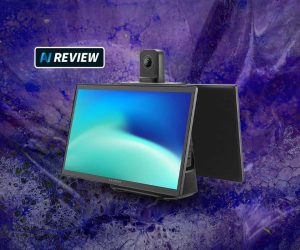

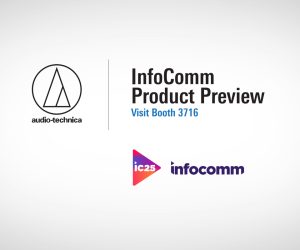




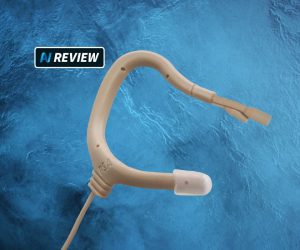

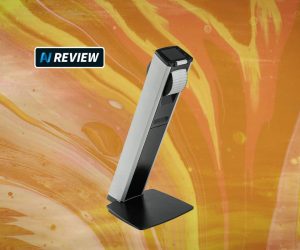
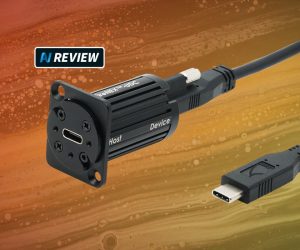
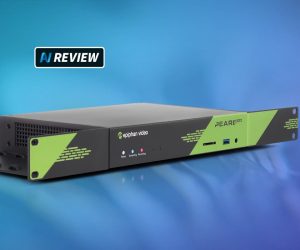


RESPONSES